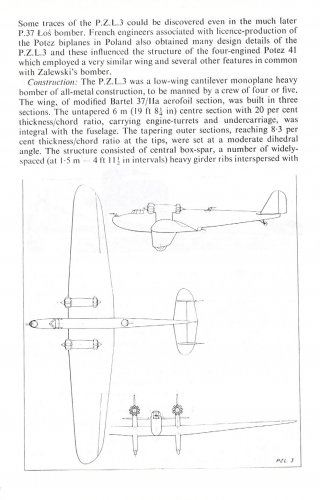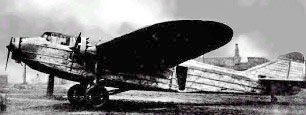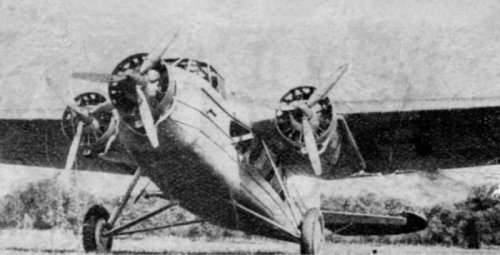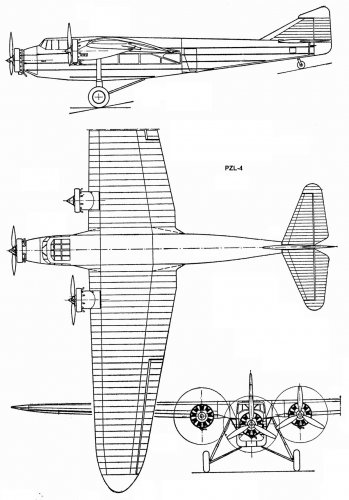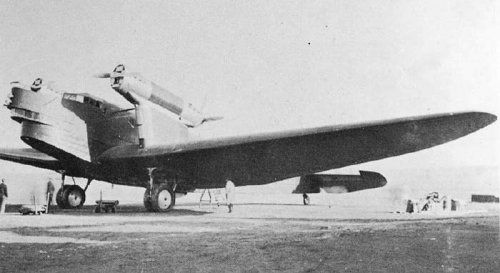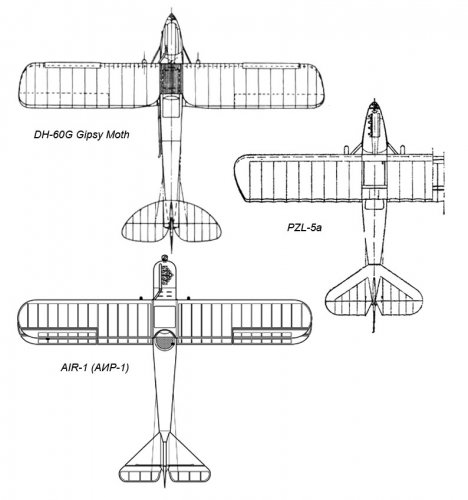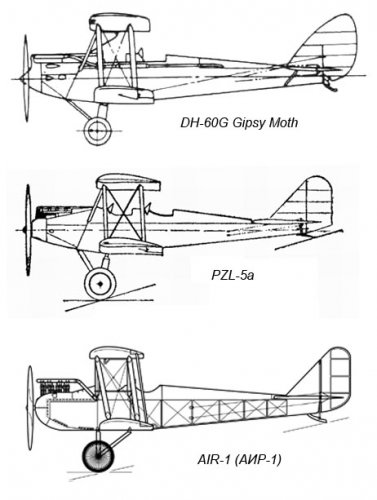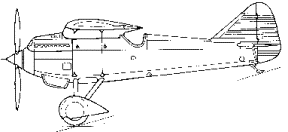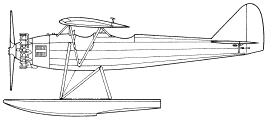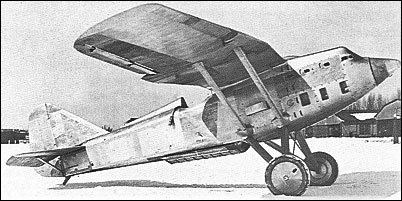You are using an out of date browser. It may not display this or other websites correctly.
You should upgrade or use an alternative browser.
You should upgrade or use an alternative browser.
Polish 4 engine bombers
- Thread starter T-50
- Start date
Hallo Justo Miranda i want to thank you for the info,its very interesting stuff especially the configuration of the engines is very unusually.
but i must say its very original, the Polish had some very interesting aircraft projects before WW2,its sad that the Germans destroy these projects
cheers T-50
but i must say its very original, the Polish had some very interesting aircraft projects before WW2,its sad that the Germans destroy these projects
cheers T-50
Boogey
B'Boomelang
- Joined
- 10 February 2009
- Messages
- 200
- Reaction score
- 41
We, in Poland, call it " tandem " ; the configuration of engines.
When in 1928 Państwowe Zakłady Lotnicze ( PZL) was establish
there was a program to project and construct five types of aircraft :
1. Fighter which was constructed as PZL P-1, famous Zygmunt Puławski's " mew wing " configuration,
derivated to P-2, P-6, P-7, P-8, P-9, P-10, P-11, P-24, P-28 ;
2. Liason PZL Ł-2, built and flying in Polish Air Force ;
3. Bomber PZL-3 of 1928 only project, French firm Henri Potez built the copy
of PZL-3 under designation Potez 41 B4N ;
4. Transport PZL-4, only project ;
5. Training PZL-5, copy of DeHavilland Moth
When in 1928 Państwowe Zakłady Lotnicze ( PZL) was establish
there was a program to project and construct five types of aircraft :
1. Fighter which was constructed as PZL P-1, famous Zygmunt Puławski's " mew wing " configuration,
derivated to P-2, P-6, P-7, P-8, P-9, P-10, P-11, P-24, P-28 ;
2. Liason PZL Ł-2, built and flying in Polish Air Force ;
3. Bomber PZL-3 of 1928 only project, French firm Henri Potez built the copy
of PZL-3 under designation Potez 41 B4N ;
4. Transport PZL-4, only project ;
5. Training PZL-5, copy of DeHavilland Moth
- Joined
- 7 June 2009
- Messages
- 532
- Reaction score
- 159
Boogey said:4. Transport PZL-4, only project ;
5. Training PZL-5, copy of DeHavilland Moth
I am sorry but it isn't correct.
The PZL-4 was not only a project, but a real prototype registered SP-AGY. Its first flight was made at January 8, 1932, by Boleslaw Orlinski. PZL-4 was trimotor full-metal passenger aircraft for 2 crew members and 10 passengers, with three 240-hp Wright Whirlwind J-5a engines. It surely wasn't a great success: the aircraft was overweighted (empty weight 4081 kg instead of projected 3350 kg), and its performance was notable worse than of Fokker F-VIIb/3m with the same engines. Therefore, PLL "LOT" airline wasn't interested in PZL-4, and no more aircraft of this type were built. The prototype was scrapped in 1937.
Here is some info in English:
http://en.wikipedia.org/wiki/PZL.4
...in Polish:
http://pl.wikipedia.org/wiki/PZL.4
http://www.powiat.mielec.pl/poser/samoloty/pzl/pzl04.htm
...and in Russian:
http://www.airwar.ru/enc/cw1/pzl4.html
Attachments
- Joined
- 7 June 2009
- Messages
- 532
- Reaction score
- 159
Also PZL-5 wasn't really a copy of DH Moth, but only a similar biplane with the same Gipsy engine. They were notably different in shape, and PZL-5 was slightly smaller. Here are some comparisons (Moth, PZL-5, and Yakovlev AIR-1).
And it's interesting, how much the Potez 41 BN5 (not B4N) was inspired by PZL-3 project, and whetwer the Potez engineers knew about it at all. At http://www.airwar.ru/enc/bww1/potez41.html it is written that Potez 41 was a derivative of unbuilt 18-seat long-range passenger flying boat project. It can explain the configuration of engines - for flying boats it wasn't any exotic.
As for me, PZL-3 project from 1928 looks more advanced than Potez 41 from 1934.
Boogey, you mentioned PZL P.2, P.9, P.10 and P.28. I don't know anything about them. Have you any details?
And it's interesting, how much the Potez 41 BN5 (not B4N) was inspired by PZL-3 project, and whetwer the Potez engineers knew about it at all. At http://www.airwar.ru/enc/bww1/potez41.html it is written that Potez 41 was a derivative of unbuilt 18-seat long-range passenger flying boat project. It can explain the configuration of engines - for flying boats it wasn't any exotic.
As for me, PZL-3 project from 1928 looks more advanced than Potez 41 from 1934.
Boogey, you mentioned PZL P.2, P.9, P.10 and P.28. I don't know anything about them. Have you any details?
Attachments
Boogey
B'Boomelang
- Joined
- 10 February 2009
- Messages
- 200
- Reaction score
- 41
It's nice on the Secret Project forum to read about the Polish historic aircraft.
Of course, t'was my mistake, dear redstar72 ; PZL-4 was built,
I should have written that it was a prototype, not a project,
and PZL-5 wasn't exactly a copy of the D.H.60 Moth, but then, in thirties, called the " Polish Moth ".
And thanx for the photo of the Potez 41
Of course, t'was my mistake, dear redstar72 ; PZL-4 was built,
I should have written that it was a prototype, not a project,
and PZL-5 wasn't exactly a copy of the D.H.60 Moth, but then, in thirties, called the " Polish Moth ".
And thanx for the photo of the Potez 41
- Joined
- 25 July 2007
- Messages
- 4,299
- Reaction score
- 4,198
redstar72, a good ref is http://awiacja.republika.pl/
The 1930 P.2 was an unbuilt P.1 development with a direct-drive, 600 hp HS.12 Lb V12 [below].
The P.9 and P.10 were both variations on the P.8/II fighter. The P.9 was to be the series production version of the P.8/II with 675 hp SECM 12H Petrel. The P.10 was to have had 552 hp RR Kestrel.
[The designations P.9 and P.10 were duplicated. The others were: a mid-1930 P.9 observation float plane project (1 x Skoda Whirlwind) below, and a 1930-31 P.10 bomber project (2 x Jupiter VIIf).]
The P.28 was 1935 fighter design based on the P.8/II but powered by a SECM 12Hdrs Petrel. The plan, suggested by SECM, was to produce a fighter for Yugoslavia (which was planning to produce Breguet 19s powered by 12Hfrs Petrels).
The planned production P.28s could be viewed as an inline-engined P.24 - ie: a P.11c with an enclosed canopy. Alas, with the Ikarus IK-L1 prototype already under tests, the JKRV wasn't interested.
The 1930 P.2 was an unbuilt P.1 development with a direct-drive, 600 hp HS.12 Lb V12 [below].
The P.9 and P.10 were both variations on the P.8/II fighter. The P.9 was to be the series production version of the P.8/II with 675 hp SECM 12H Petrel. The P.10 was to have had 552 hp RR Kestrel.
[The designations P.9 and P.10 were duplicated. The others were: a mid-1930 P.9 observation float plane project (1 x Skoda Whirlwind) below, and a 1930-31 P.10 bomber project (2 x Jupiter VIIf).]
The P.28 was 1935 fighter design based on the P.8/II but powered by a SECM 12Hdrs Petrel. The plan, suggested by SECM, was to produce a fighter for Yugoslavia (which was planning to produce Breguet 19s powered by 12Hfrs Petrels).
The planned production P.28s could be viewed as an inline-engined P.24 - ie: a P.11c with an enclosed canopy. Alas, with the Ikarus IK-L1 prototype already under tests, the JKRV wasn't interested.
Attachments
Boogey
B'Boomelang
- Joined
- 10 February 2009
- Messages
- 200
- Reaction score
- 41
Dear T-50, there were no possibilities of construct such a complicated and expensive machine
for poor Poland then in late thirties. Our aviation industry hadn't enough experiences too.
The was a project of the P.Z.L.-37 Łoś developement designated P.Z.L.-49 Miś
with two Bristol Hercules Mk. II or Gnome et Rhône 14 N 50/51 radial engines ... Find the Miś below :
http://www.samoloty.ow.pl/
@ Apophenia All correct ;D
The Zygmunt Pulawski's idea of P.Z.L. P-2 was to build a strutless version of the earlier P.Z.L. P-1
and there were two P.Z.L. designations with a number 9 :
P.Z.L.-9 observation and P.Z.L. P-9 fighter,
as well as two designations with a number 10 :
P.Z.L.-10 two or three engined bomber project and P.Z.L. P-10 You've mentioned
but with one reservation that P.Z.L. P-10 had to be built with Rolls - Royce Kestrel or Renault inline engine
and wasn't a duplicate of P.Z.L. P-9.
for poor Poland then in late thirties. Our aviation industry hadn't enough experiences too.
The was a project of the P.Z.L.-37 Łoś developement designated P.Z.L.-49 Miś
with two Bristol Hercules Mk. II or Gnome et Rhône 14 N 50/51 radial engines ... Find the Miś below :
http://www.samoloty.ow.pl/
@ Apophenia All correct ;D
The Zygmunt Pulawski's idea of P.Z.L. P-2 was to build a strutless version of the earlier P.Z.L. P-1
and there were two P.Z.L. designations with a number 9 :
P.Z.L.-9 observation and P.Z.L. P-9 fighter,
as well as two designations with a number 10 :
P.Z.L.-10 two or three engined bomber project and P.Z.L. P-10 You've mentioned
but with one reservation that P.Z.L. P-10 had to be built with Rolls - Royce Kestrel or Renault inline engine
and wasn't a duplicate of P.Z.L. P-9.
Attachments
- Joined
- 25 July 2007
- Messages
- 4,299
- Reaction score
- 4,198
Thanks Boogie.
That's the first I'd heard that the P.2 was to be strutless! There must have been some major changes planned for the gulled centre section
Thanks for correcting my PZL 9/PZL P.9 muddle. (Why did PZL choose those designation variations? )
)
About the P.10:interesting to hear that a Renault inline was also planned. Can you clarify "wasn't a duplicate of P.Z.L. P-9" ... do you mean that the P.10 wasn't based on the P.8/II airframe?
That's the first I'd heard that the P.2 was to be strutless! There must have been some major changes planned for the gulled centre section
Thanks for correcting my PZL 9/PZL P.9 muddle. (Why did PZL choose those designation variations?
About the P.10:interesting to hear that a Renault inline was also planned. Can you clarify "wasn't a duplicate of P.Z.L. P-9" ... do you mean that the P.10 wasn't based on the P.8/II airframe?
Boogey
B'Boomelang
- Joined
- 10 February 2009
- Messages
- 200
- Reaction score
- 41
@ Apophenia You're correct once again ; it was my misunderstanding of the part of Your text :
" The designations P.9 and P.10 were duplicated ... " and I've wrote the same wisdoms : You've wrote first.
You've wrote first.
We still talk about the whole serie of P.Z.L. gull wing fighters : P-1, P-2, P-8, P-9, P-10, P-11, P-24, P-28.
Why did P.Z.L. choose those designation variations ? It happens in every designation systems.
Some projects are cancelled, their numbers go to anothers ... Think that Puławski's fighters were first.
As the Polish Command of the Air Force decided to have only radial engines for their aircraft,
then Puławski's idea of inline engined fighters was dead. Soon he's dying in the crash of his P.Z.L.-12
in Warsaw ; I live close to this place ... ( listening Whole Lotta Love from LZ's Mothership album now ).
Now, if You look attentively at the draft of the P.Z.L. P-2 You attached, You'll see that there are no struts charasteristic for the rest of the aircrafts of Puławski's serie.
In this version wings' stiffness had to be strenghted by the system of wires replacing the struts.
Could You, please, show me the fragment of the book You have, describing the P.Z.L.-10 bomber ...
" The designations P.9 and P.10 were duplicated ... " and I've wrote the same wisdoms :
We still talk about the whole serie of P.Z.L. gull wing fighters : P-1, P-2, P-8, P-9, P-10, P-11, P-24, P-28.
Why did P.Z.L. choose those designation variations ? It happens in every designation systems.
Some projects are cancelled, their numbers go to anothers ... Think that Puławski's fighters were first.
As the Polish Command of the Air Force decided to have only radial engines for their aircraft,
then Puławski's idea of inline engined fighters was dead. Soon he's dying in the crash of his P.Z.L.-12
in Warsaw ; I live close to this place ... ( listening Whole Lotta Love from LZ's Mothership album now ).
Now, if You look attentively at the draft of the P.Z.L. P-2 You attached, You'll see that there are no struts charasteristic for the rest of the aircrafts of Puławski's serie.
In this version wings' stiffness had to be strenghted by the system of wires replacing the struts.
Could You, please, show me the fragment of the book You have, describing the P.Z.L.-10 bomber ...
- Joined
- 25 July 2007
- Messages
- 4,299
- Reaction score
- 4,198
Boogie,
Now that you point it out, the P.2's bracing wires are obvious! :-[
I read about the PZL.10 on Paweł Szczepaniec's site: http://awiacja.republika.pl/
PZL.10
Designation PZL.10 (not to be confused with the PZL P.10 fighter) was developed in 1930-31 by engineer Franciszka Misztala as a bomber project to replace the [WL's 21] Fokker F-VIIb/3m. The P.10 design was an alternative to adapting the [poorly-performing] PZL.4 passenger aircraft to the bomber role. The PZL.10 remained a paper project.
Construction: completely metal bomber. Double vertical tail, landing gear retracted into engines in nacelles.* Power was probably be 2 x Bristol Jupiter VIIf engines.
Armament: machineguns in dorsal and tail positions. Bomb load would be 1,500 kg.
* trans. says "gondolas" suggesting suspended nacelles similar to F-VIIb/3m wing engines.
Now that you point it out, the P.2's bracing wires are obvious! :-[
I read about the PZL.10 on Paweł Szczepaniec's site: http://awiacja.republika.pl/
PZL.10
Designation PZL.10 (not to be confused with the PZL P.10 fighter) was developed in 1930-31 by engineer Franciszka Misztala as a bomber project to replace the [WL's 21] Fokker F-VIIb/3m. The P.10 design was an alternative to adapting the [poorly-performing] PZL.4 passenger aircraft to the bomber role. The PZL.10 remained a paper project.
Construction: completely metal bomber. Double vertical tail, landing gear retracted into engines in nacelles.* Power was probably be 2 x Bristol Jupiter VIIf engines.
Armament: machineguns in dorsal and tail positions. Bomb load would be 1,500 kg.
* trans. says "gondolas" suggesting suspended nacelles similar to F-VIIb/3m wing engines.
Boogey
B'Boomelang
- Joined
- 10 February 2009
- Messages
- 200
- Reaction score
- 41
Franciszek Misztal ;D Franciszka is a female name ; it's Polish dramatic gramatic :
-> My name is Franciszek ;
-> I read about the aicraft of Franciszka You've caught in text ;
-> I give a gift to Franciszkowi ;
-> I heard about Franciszku ;
-> I drink beer with Franciszkiem ;
-> Franciszku, don't f***k my wife because I'll kill You ;D
I know the site You gave, but still there's no certainty if the P.Z.L.-10 had to be two or three engined.
Mean Mr. Adolf invaded on the First of September 1939 and spoiled our fun.
-> My name is Franciszek ;
-> I read about the aicraft of Franciszka You've caught in text ;
-> I give a gift to Franciszkowi ;
-> I heard about Franciszku ;
-> I drink beer with Franciszkiem ;
-> Franciszku, don't f***k my wife because I'll kill You ;D
I know the site You gave, but still there's no certainty if the P.Z.L.-10 had to be two or three engined.
Mean Mr. Adolf invaded on the First of September 1939 and spoiled our fun.
- Joined
- 25 July 2007
- Messages
- 4,299
- Reaction score
- 4,198
Boogey said:... Polish dramatic gramatic ...
Wow, that's confusing! Okay, Frank it is.
As to PZL.10 engines, while it's true that twin-Jupiter power would seem a little anemic for the times, the trimotor layout for bombers was also rather passé (outside of Italy). At any rate, 2 Jupiters would have provided more power than either the 3 x Whirlwinds of the PZL.4 or F.VIIb/3m.
[Off topic: most sources list 21 x Polish F.VIIb/3m bombers. Did Poland receive a prototype directly from Fokker before Plage i Laśkiewicz commenced local production?]
Boogey
B'Boomelang
- Joined
- 10 February 2009
- Messages
- 200
- Reaction score
- 41
I know that in November 1928 mr. Gumowski, engineer of Pl&L, was sent to Amsterdam
to receive the licence documentary from the Fokker firm.
The Polish Ministry of Military wanted Pl&L to build the F-VII as a replacement of the archaic Farman F.86.
Polish version of the Fokker F-VII has been elaborated by Jerzy Rudlicki.
I'll ask my friend to translate for You the entire Polish text
from Andrzej Morgała " Polskie Samoloty Wojskowe 1918 - 1939 " book
about the Fokker F-VII in Polish Airforce history. My English is too weak.
to receive the licence documentary from the Fokker firm.
The Polish Ministry of Military wanted Pl&L to build the F-VII as a replacement of the archaic Farman F.86.
Polish version of the Fokker F-VII has been elaborated by Jerzy Rudlicki.
I'll ask my friend to translate for You the entire Polish text
from Andrzej Morgała " Polskie Samoloty Wojskowe 1918 - 1939 " book
about the Fokker F-VII in Polish Airforce history. My English is too weak.
Apophenia said:Boogey said:... Polish dramatic gramatic ...
Wow, that's confusing! Okay, Frank it is.
As to PZL.10 engines, while it's true that twin-Jupiter power would seem a little anemic for the times, the trimotor layout for bombers was also rather passé (outside of Italy). At any rate, 2 Jupiters would have provided more power than either the 3 x Whirlwinds of the PZL.4 or F.VIIb/3m.
[Off topic: most sources list 21 x Polish F.VIIb/3m bombers. Did Poland receive a prototype directly from Fokker before Plage i Laśkiewicz commenced local production?]
Hi Apophenia,
I remember some fifty plus years ago, about the last time the BBC broadcast a free and fair discussion about UK Aviation. The panel was composed of real people drawn from across the industry and one of the things they all agreed on was that they should have been allowed to design three engine aircraft in the Second World War. This would have created more effective aircraft with a higher survival rate. The Establishment / Whitehall wrongly blocked such ideas as being passé. It was evident from the tone of the discussion that it had left a bitter taste.
- Joined
- 25 July 2007
- Messages
- 4,299
- Reaction score
- 4,198
Boogey: I look forward to that.
Spark: Thanks, there have certainly been some high-performing trimotors. My personal favorite is the S IV Postjager/Panderjager ... although even that design evolved into a twin-engined bomber concept.
http://www.secretprojects.co.uk/forum/index.php/topic,5276.0.html
It's intriguing to imagine Second World War British trimotors. Does anyone know of any projects for conventional tractor trimotors for the RAF in WWII?
Spark: Thanks, there have certainly been some high-performing trimotors. My personal favorite is the S IV Postjager/Panderjager ... although even that design evolved into a twin-engined bomber concept.
http://www.secretprojects.co.uk/forum/index.php/topic,5276.0.html
It's intriguing to imagine Second World War British trimotors. Does anyone know of any projects for conventional tractor trimotors for the RAF in WWII?
Boogey
B'Boomelang
- Joined
- 10 February 2009
- Messages
- 200
- Reaction score
- 41
For God sake, I hope there weren't such silly projectcs in RAF.
Trimotors was an idea of Mussolini's Italian Airforce bombers only, mostly the SM, Breda and CANT.
British were always simetric 2 to 4, Manchaster to Lancaster, H.P.56 to H.P.57 Halifax a.s.o.,
but never three engined in the times of WWII, I hope ...
Trimotors was an idea of Mussolini's Italian Airforce bombers only, mostly the SM, Breda and CANT.
British were always simetric 2 to 4, Manchaster to Lancaster, H.P.56 to H.P.57 Halifax a.s.o.,
but never three engined in the times of WWII, I hope ...
- Joined
- 21 May 2006
- Messages
- 3,002
- Reaction score
- 2,283
All I can say is thank goodness, that the already hard pressed and obsolete Polish Air Force (although to late and to little to modernize with war clouds lingering!) was not equipped with these bombers!
Unfortunately I can envisage these poor courageous Polish bomber crews attempting to make a difference in these clapped up obsolete bombers against the deadly Luftwaffe Bf-109's and Bf-110's..........
Regards
Pioneer
Unfortunately I can envisage these poor courageous Polish bomber crews attempting to make a difference in these clapped up obsolete bombers against the deadly Luftwaffe Bf-109's and Bf-110's..........
Regards
Pioneer
Similar threads
-
-
-
-
-
Dutch Fokker bomber and fighter projects from the late 30ties
- Started by T-50
- Replies: 212


